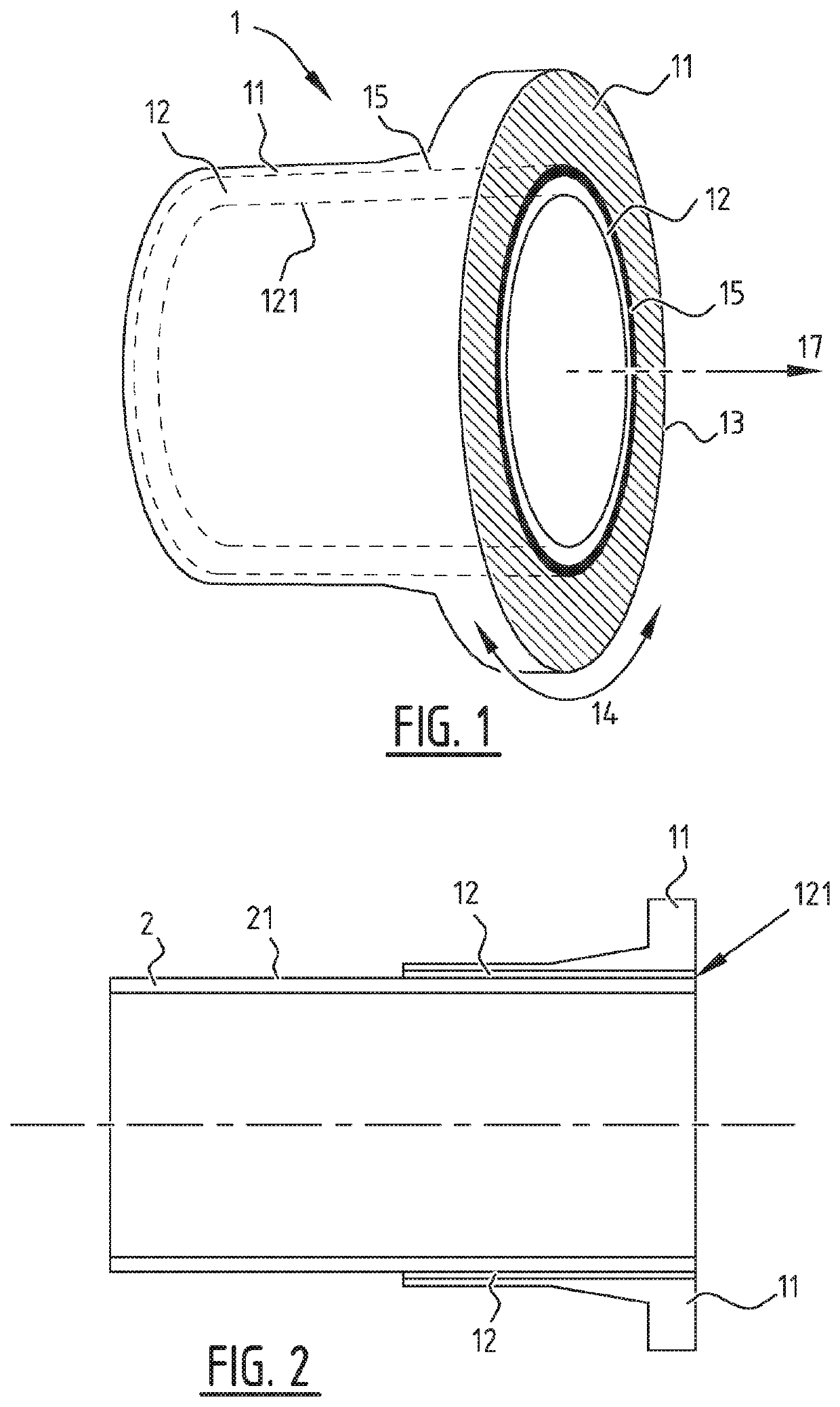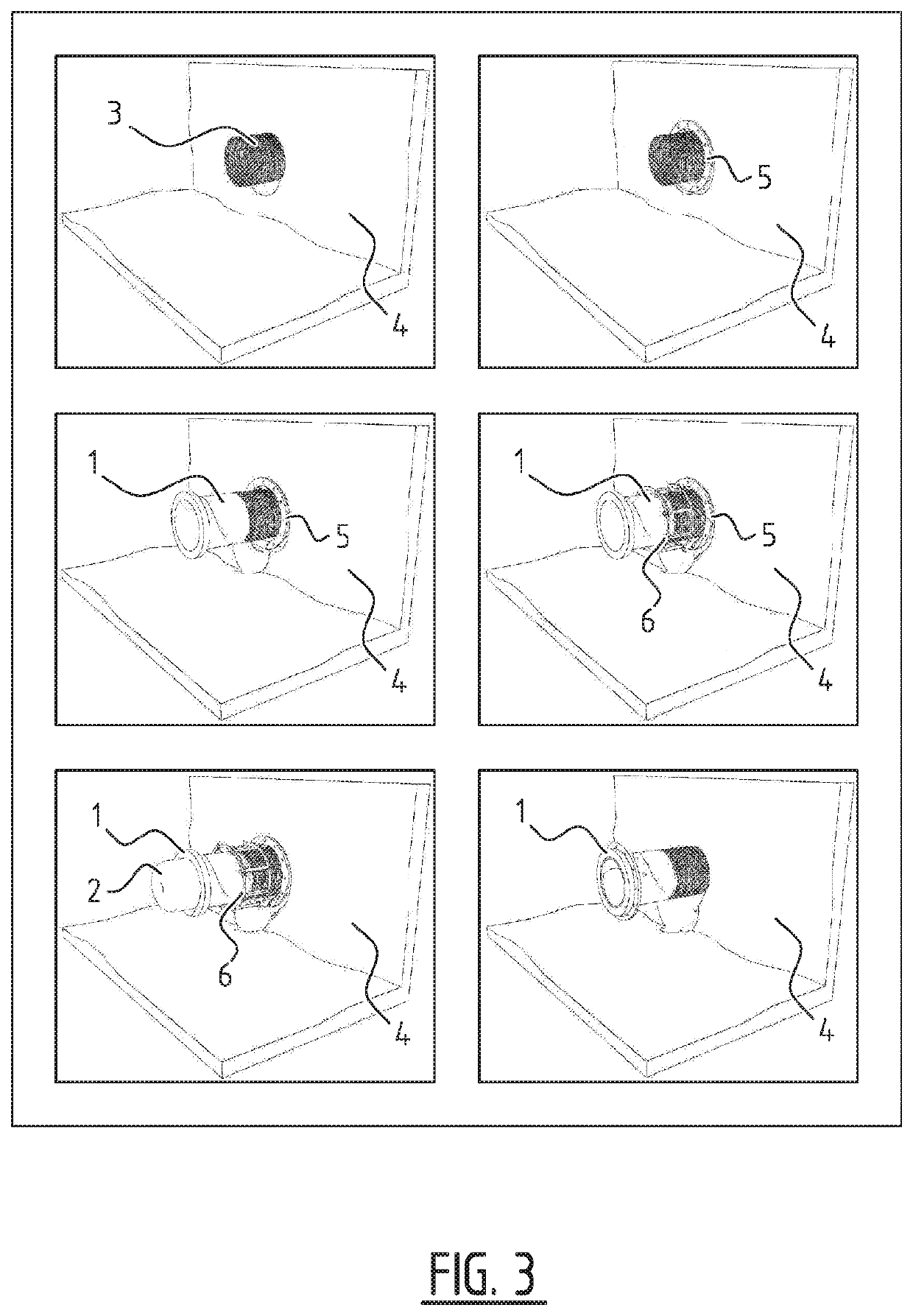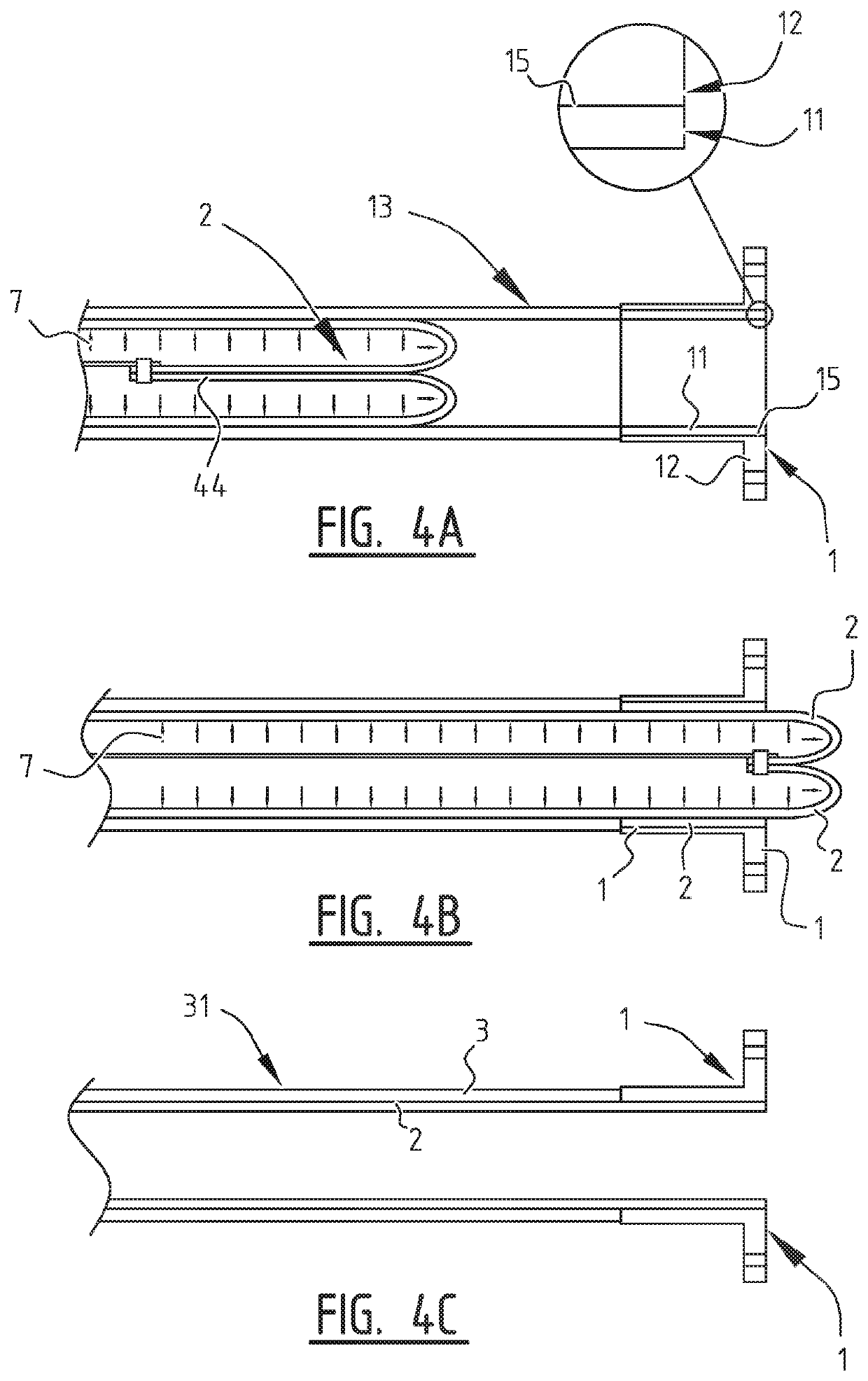Fitting element for use in rehabilitation of pipelines and method for producing the same
a technology for fitting elements and pipelines, applied in the direction of hose connections, pipe elements, mechanical equipment, etc., can solve problems such as delamination between components
- Summary
- Abstract
- Description
- Claims
- Application Information
AI Technical Summary
Benefits of technology
Problems solved by technology
Method used
Image
Examples
Embodiment Construction
[0061]Referring to FIG. 1, a perspective view of a fitting element 1 according to an embodiment of the invention is shown. The fitting element 1 is made of a composite material, comprising reinforcing fibers and a resin composition, for instance glass fiber-reinforced unsaturated polyester, and comprises a first part 11 of reinforcing fibers and a substantially fully cured resin composition. A second part 12 of the fitting element 1 comprises dry reinforcing fibers that form a bondable surface. This second part 12 is substantially free of resin composition in a fitting element 1 as such, i.e. as produced. The fitting element 1 comprises a circumferential body of which an outer circumferential shell forms the first part 11, and an inner circumferential shell forms the second part 12. Both circumferential shells of the fitting element 1 extend over the substantially complete circumference 13 of the fitting element 1 in a circumferential direction 14. An inner surface 121 of the second...
PUM
| Property | Measurement | Unit |
|---|---|---|
| storage temperature | aaaaa | aaaaa |
| temperature | aaaaa | aaaaa |
| temperature | aaaaa | aaaaa |
Abstract
Description
Claims
Application Information
 Login to View More
Login to View More - R&D
- Intellectual Property
- Life Sciences
- Materials
- Tech Scout
- Unparalleled Data Quality
- Higher Quality Content
- 60% Fewer Hallucinations
Browse by: Latest US Patents, China's latest patents, Technical Efficacy Thesaurus, Application Domain, Technology Topic, Popular Technical Reports.
© 2025 PatSnap. All rights reserved.Legal|Privacy policy|Modern Slavery Act Transparency Statement|Sitemap|About US| Contact US: help@patsnap.com



